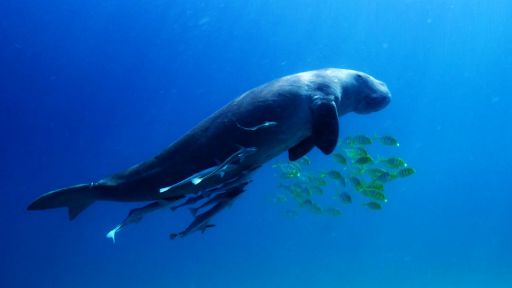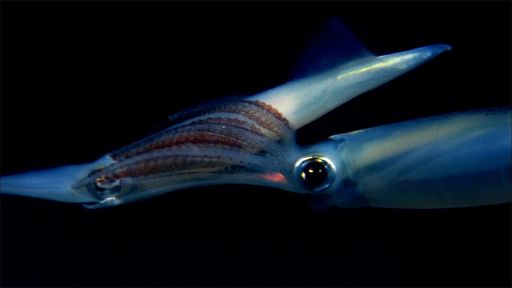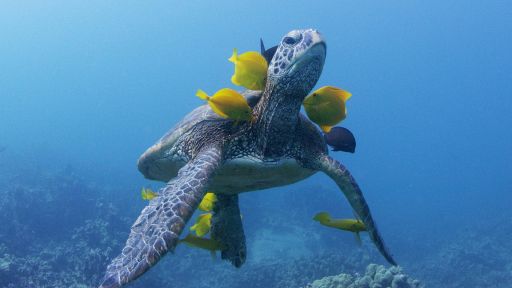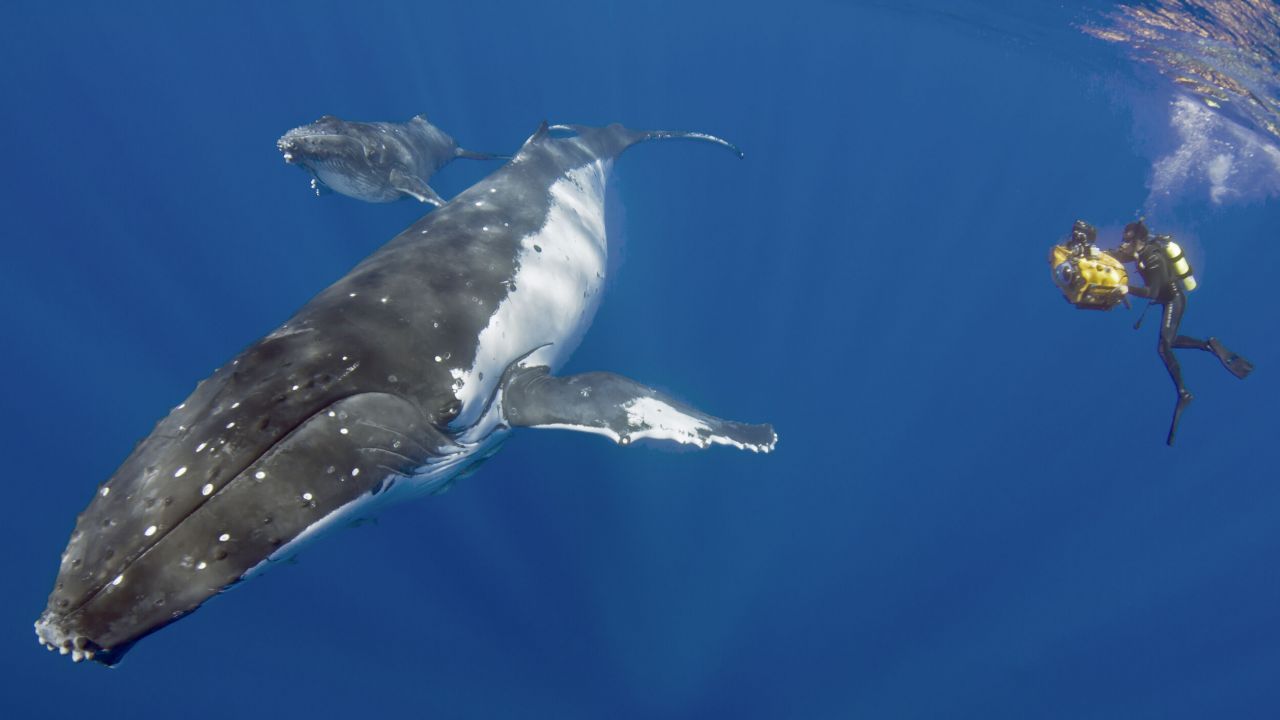
Director of Photography Howard Hall filming a Humpback Whale mother and a calf. Tonga. Credit: © Michele Hall
Howard Hall, one of the world’s foremost underwater filmmakers, brings to NATURE a lifetime of insights into how life in the ocean really works – in surprisingly cooperative communities built on age-old partnerships. NATURE’s Sr. Audience Engagement Specialist Chelsey Saatkamp reached out to Howard to ask him about his experience working on the film.
Take a deep breath and experience the complex world of ocean waters. Get a never-before-seen look at how life underwater co-exists in a marriage of necessity in Soul of the Ocean, which premiered Wednesday, January 25, 2023, on PBS (check local listings).

Producer Michele Hall filming a Giant Cuttlefish. Australia. Credit: © Peter Kragh
What was the filming process like for Soul of the Ocean? What are the major challenges of filming underwater?
We have been capturing and compiling the underwater behavioral sequences for Soul of the Ocean for over ten years. During that time, my impression of ocean ecosystems has evolved. Most people feel the ocean is a dangerous place characterized by constant violent predation. But I learned that this is not the primary characteristic of life in the ocean. Peaceful cooperation between species is far more ubiquitous than predation and violence. This idea became the seed for a concept that became Soul of the Ocean.
Perhaps the most challenging aspect of filming natural history, above water or underwater, is predictability. Environments are constantly changing. Between the time we discover a population of animals and the time we can mount an expedition to film their behavior, the population often moves or disappears.
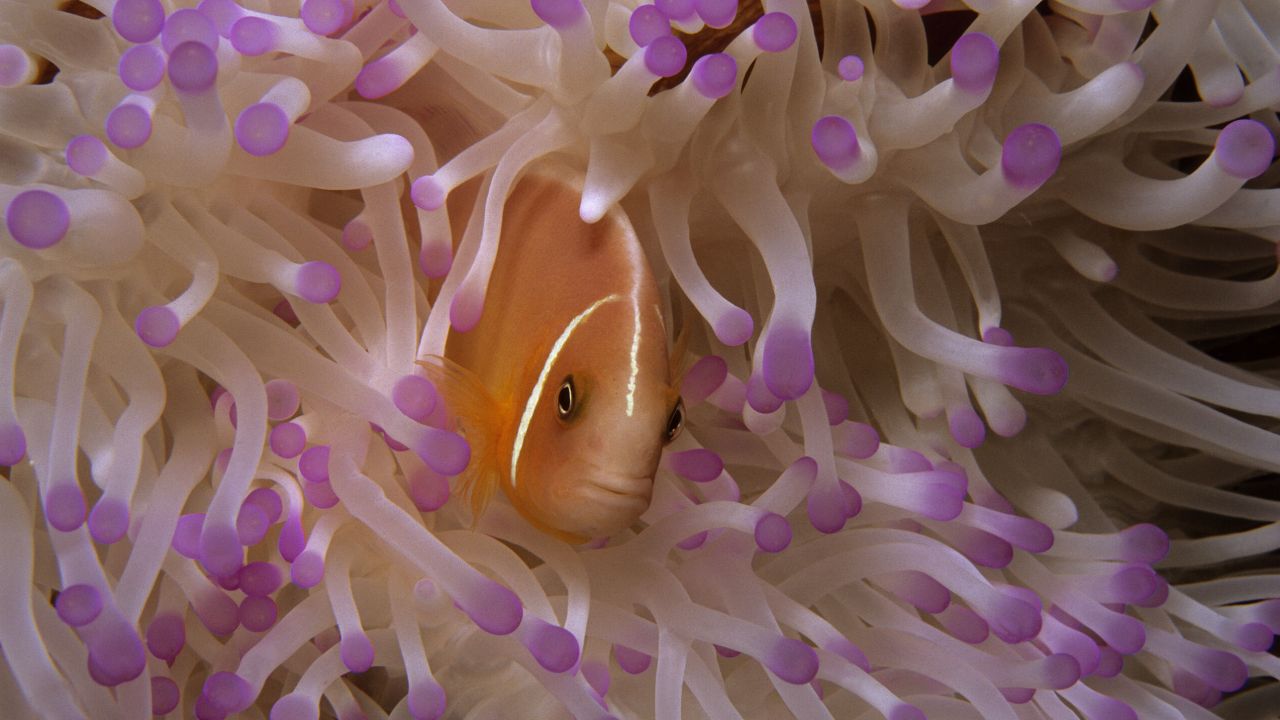
Pink anemonefish, Amphiprion perideraion, hiding in its own anemone. Indonesia. Credit: © Howard Hall
You’ve been filming underwater for decades now – what have been some of the major changes you’ve witnessed regarding life in the ocean?
The most noticeable change in ocean ecosystems is simply that there is less of almost everything. Most populations of marine creatures are declining. Where thirty years ago it was easy to film some animals, now it is nearly impossible. There are many causes, including climate change. But the largest impact has been overfishing.
Did you witness anything new in this film that surprised you?
Being surprised by what animals do is one of my greatest joys. Animal behaviors are often amazingly complex. We are just beginning to appreciate how complicated and subtle fish behaviors can be. While filming Soul of the Ocean, I saw several things that I had never seen before. I saw anemonefish attack sea turtles, and discovered why. I witnessed a strange relationship between dugongs and remoras (suckerfish). As far as I know, both behaviors had not been previously known to science.
Anything you didn’t have a chance to film or include in the final cut but hope to in the future?
Definitely. I’m already spending hundreds of hours underwater shooting footage for the next film. We have expeditions planned to the Sea of Cortez, Bahamas, and Indonesia. As I gather footage, I hope to learn even more about how the ocean works. And eventually, I hope to have an epiphany that seeds the idea for the next film.
What do you hope viewers take away from this film?
Mostly, I hope to help viewers fall in love with the ocean and marine creatures. Many of these animals are incredibly beautiful and have complex and compelling characters. The vast majority of viewers will likely never see these animals in person. If our films help them appreciate undersea environments and wildlife, I think they are more likely to advocate for their protection.

